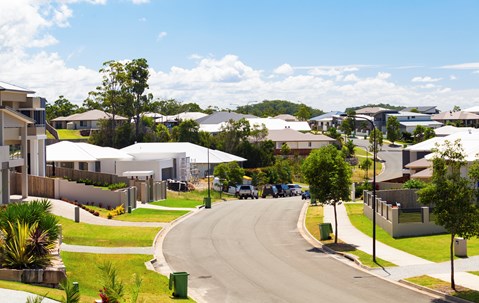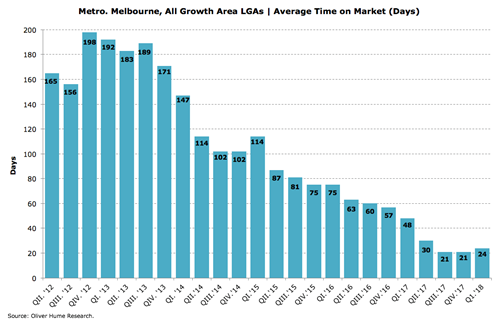News & Tips

Melbourne Land Market Robust But Price Growth Slowing
Melbourne Land Market Robust But Price Growth Slowing
Demand for land in and around Mebourne continues to experience unprecedented demand with the average block being snapped up just 24 days after hitting the market, according to new research from Oliver Hume.
The new analysis of land sales rates by Oliver Hume, which measures the period from when land is released for sale by a developer until it is contracted by a purchaser, recorded a slight uptick in the first three months of 2018, but remains at historical lows.
Since late 2012, when land was taking nearly 200 days to sell, the indicator has dropped to around 24 days. The demand for land has seen prices continue to rise, although price growth now appears to be slowing, while lot sizes continue to edge lower.
From the final quarter of 2017 to the March quarter 2018, Melbourne’s key growth area markets saw the median lot price increasing by 4.7% (or $14,000) to reach $314,000.
This occurred while the average size of lots solds continued to decrease in size reaching 400 square metres in the March quarter 2018 (down from 406 square metres in the December quarter 2017).

Oliver Hume National Head of Research George Bougias said population growth remains much stronger than previously forecast but affordability constraints were now becoming evident.
“Record levels of population growth have placed significant demand pressures on housing and land. Combined with continued low wage growth this is fundamentally changing the nature of the market for new land in Melbourne’s greenfield markets,” he said.
“More broadly, the significant structural change we continue to see in the economy continues to shape the market. Average lot sizes in metropolitan Melbourne have declined by around third over the last decade while Mebourne’s annual population growth has doubled.”
Mr Bougias highlighted Victoria’s robust employment growth as a factor driving the market more recently but noted sluggish wage growth continues to play a major underlying role.
Melbourne could well overtake Sydney as Australia’s largest city soon with one estimate suggesting this will occur within the next decade.
Going forward, Melbourne land sales volumes and activity levels might be driven by the new wave of record infrastructure spending in the pipeline both from the Federal and State Governments. Major state and city-shaping projects include the North East Link –the biggest transport project in the state’s history and the Metro Tunnel.
For more information visit www.oliverhume.com.au
ENDS: Media enquiries to Ben Ready on 0415 743 838.

